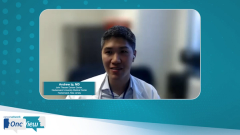
DLBCL: Treatment Considerations in the Second Line
Experts on diffuse large B-cell lymphoma discuss the factors that inform their treatment choices in the second line.
Episodes in this series

Transcript:
Andre H. Goy, MD: I want to go back to wrap up this conversation. In the second-line setting, now that we have multiple drugs approved, when you see a patient—I know we touched on this a little as we discussed every topic—summarize for our audience how to decide what treatment to give to whom.
Andrew Ip, MD: If I don’t say it enough, I’ll say it again. I think CAR [chimeric antigen receptor] T-cell therapy in the second line, if they relapsed within 18 months, has to be the top of consideration. For those who are maybe not as familiar, even with a patient with an ECOG performance status of 2, usually because they may be symptomatic from disease, you should at least consider it. At least in my clinic, when I approach a patient for a second line and we talk about CAR T-cell therapy, there are always these questions of, “I have to stay in the hospital for 10 to 14 days.” Of course, we’re looking at studies to deliver it more safely in the outpatient setting. And also, the collection and the time to wait for CAR T cells are all factors that I take into account for a second line.
And there are certainly some patients who don’t want to go through CAR T-cell therapy for X, Y, or Z reason, even though we know it’s probably the right thing in most settings. In those sorts of situations, I will consider other targeted agents like tafasitamab plus lenalidomide. Or something maybe like an R2i type, which is ibrutinib, lenalidomide, and rituximab, something still very treatable. It may not necessarily induce a CR [complete response] and a long-term CR, but in those patient settings, it’s usually potentially more palliative.
As you said, it could be an 85- or a 90-year-old patient. I have a 98-year-old patient I’m treating with venetoclax in technically the fourth line, but there are a lot of things that go into it. I think at the end of the day though, it should be CAR T cells at least considered in the second line for all people who are seeing relapsed DLBCL [diffuse large B-cell lymphoma] and then going from there.
Transcript edited for clarity.
Newsletter
Stay up to date on recent advances in the multidisciplinary approach to cancer.




















































































